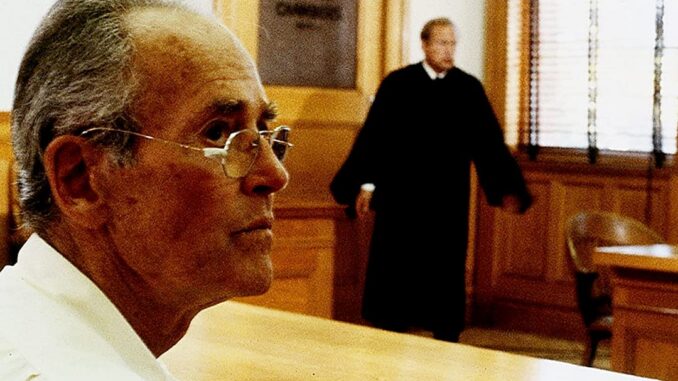
David Wolfford: The Released FRQs
Whew! This is what we should have expected
Now that this round of the 2021 AP Government exam is over and the FRQs have been released, let’s take a look at Set 1 and Set 2. This is really only the 2nd full round of the national exam post-redesign. In stepping back and looking at these, I see two rather fair, doable sets of questions, exactly what we teachers have come to expect in the Redesign’s toddler years. The first thing you will notice about both Scenario prompt FRQ #1 is the College Board question committee’s desire to reach students and to prove hip with the subject. Nearly every teen taking this exam is familiar with Taylor Swift and Mark Zuckerberg. There was some discussion on the AP Government teacher’s Facebook page about whether a prompt that points to voter registration (Swift’s) as a structural barrier, might also enable the age limit of 18 as an acceptable answer. I doubt it. In reading it again, the prompt asks for “the structural barrier,” and if there’s only one here, it’s voter registration. An age restriction seems just more established law. We shall see. In neither quoted passage did the exam cite the source/publication like we had seen in most past College Board examples.
Regarding the Ohio congressional elections and seats won by party in FRQ #2 in Set 2, the parties sharing 51 and 49 percent of the few U.S. House seats seemed mathematically impossible to me. I guess, because lately Ohio has sent 16 delegates to the U.S. House. In 1982, however, the Buckeye State sent 21. I checked the math anyway, based on the listing for who served in the 98th Congress commencing in January 1983 from the Biographical Directory of Congress. Eleven Republicans and ten Democrats. With my rounding, Democrats won 48% of the seats and Republicans won 52%. I’ve not gotten to the Plain Dealer source cited at bottom of the illustration yet, but there was at least one incomplete term and perhaps a special election during that era. No big whoop.
The 1982 election made me think of the Reagan Democrats probably rising in number as early as 1982 (though they’re usually noted in the 1984 presidential election) and other forces, many of which should be acceptable on this question. Surely our minds went to gerrymandering, and what seems to be the Week 1 consensus on what the question is primarily trying to elicit. Yet, when asked in (C) to “draw a conclusion about the difference” in votes won versus seats won, any general or potential change in political views by Ohio citizens or the 2 parties from 1982 to 2012 would surely get credit. That opens the door for a lot of answers. I appreciated the quantitative FRQ in the other set on Cabinet diversity. You’ll see a similar example on p. 176 in the AMSCO book.
For the SCOTUS comparison, I committed a major classroom crime. Maybe you’re familiar with the film Gideon’s Trumpet. Looks like we all should have shown it (or parts of it). Though it is a bit hokey, slow, and a Hallmark Hall of Fame made-for-TV bomb circa 1980, Gideon’s Trumpet, or selected clips, would have proved priceless in helping students answer FRQ #3 as it compares Betts v. Brady with Gideon v. Wainwright. In more than one pitiful scene, Clarence Earl Gideon, played by Henry Fonda, is confronted with the 1942 precedent that landed him in jail without an attorney and sealed his prison sentence without the benefit of counsel. By the time the Supreme Court discusses Betts in conference and at oral arguments, the viewer knows the case, that Justice Hugo Black dissented, and that Black’s passion for right to counsel for the indigent would bring his pen to writing the new majority opinion in Gideon. I showed the full, award-less movie to my College Prep classes, but new tech, limited DVD access, and time constraints prevented a showing to my AP classes. Hopefully those cards I made the students create did the trick.
Don’t know about you folks, but FRQ style #4 has had me rattled since they came out with it. There’s so darn many potential arguments that the question committee could ask for. I don’t think my students have yet “become one with” the Foundational Docs. So, I was more anxious to see these released FRQs than the others. These are two rather good and reasonable designs for students in this course. One centered on federalism and one centered on separation of powers. What could be more essential to the course, and fairer in terms of expectation. The Foundational Docs offered also look plausible. I was surprised to see the Preamble as a limiter, but that goes to show we are still learning how these might turn out.
I began creating a possible answer list, like so many of us do. Johnny Burkowski has offered lists for Set 1 and Set 2 on the AP Gov Facebook page. The discussion offers some tweaks and suggestions. I would assume with more time, the acceptable answers that formulate at the Reading will differ slightly. Many of our students will take a different version soon. Hopefully these released examples help them.
David Wolfford is the proprietor of USGOPO.COM and teaches AP Government at Mariemont High School, Cincinnati.